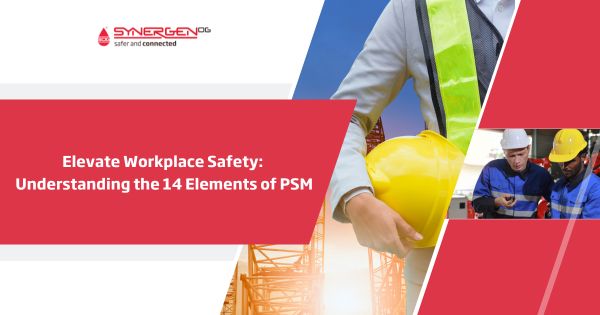In the oil and gas industry, process safety management (PSM) is of utmost importance to ensure workplace safety and prevent accidents. PSM encompasses a comprehensive approach to identifying, assessing, and mitigating process-related hazards.
Understanding the 14 elements of PSM is crucial for organizations in the oil and gas industry to establish effective safety protocols and protect their workforce. In this article, we will explore each of these elements in detail.
- Employee Participation:
Employee participation lies at the core of PSM. Encouraging active involvement from all levels of the organization helps foster a culture of safety and increases awareness of potential hazards. - Process Safety Information:
This element involves gathering, documenting, and updating relevant information about the process, including equipment, chemicals, and potential hazards. It is essential for employees to have access to accurate and up-to-date process safety information. - Process Hazard Analysis:
Process hazard analysis (PHA) identifies and evaluates potential hazards associated with the process. Various methods, such as HAZOP (Hazard and Operability Study) and FMEA (Failure Mode and Effects Analysis), are utilized to assess risks and implement necessary controls and safeguards. - Operating Procedures:
Establishing detailed and accurate operating procedures ensures that processes are carried out safely. Clear instructions, including process parameters, safety measures, and emergency protocols, must be provided to guide operators. - Training and Competence:
Implementing effective training programs ensures that employees have the necessary knowledge and skills to perform their tasks safely. Training should cover both routine operations and emergency response procedures. - Contractors:
Contractor management is crucial when working with external companies. Ensuring that contractors adhere to the same safety standards and have established protocols in place helps maintain a safe working environment. - Pre-Startup Safety Review:
Before starting up or modifying a process, a thorough review should be conducted to verify that all required safeguards are in place. This element ensures that the process is safe to operate before it goes online. - Mechanical Integrity:
Regular inspection and maintenance of equipment are essential to prevent equipment failures and maintain process integrity. This includes testing, calibrating, and repairing equipment as needed. - Hot Work Permit:
Obtaining a hot work permit is crucial before any hot work activity is conducted. This element ensures that proper precautions, such as fire detection systems and fire extinguishers, are in place to prevent fires and explosions. - Management of Change:
Managing changes to the process, such as modifications to equipment or procedures, requires a formal process to assess potential impacts on safety and ensure appropriate measures are taken to maintain safety levels. - Incident Investigation:
When incidents occur, thorough investigations should be conducted to determine the root cause and identify corrective actions. Learnings from incidents can be utilized to enhance safety measures and prevent similar occurrences. - Emergency Planning and Response:
Having a robust emergency response plan, including evacuation procedures and communication protocols, is vital for effectively managing emergencies. Regular drills and training help ensure preparedness. - Compliance Audits:
Conducting regular compliance audits verifies that processes align with established safety standards and regulatory requirements. Audits help identify any deviations or gaps in the implementation of PSM elements. - Trade Secrets:
While maintaining confidentiality is essential, it should not hinder the sharing of critical safety information. Balancing the protection of trade secrets with the need for safety transparency is vital for effective PSM implementation.
Conclusion
Understanding and implementing the 14 elements of PSM elevates workplace safety in the oil and gas industry. By ensuring employee participation, adhering to established procedures, conducting regular inspections and audits, and responding effectively to incidents, organizations can mitigate risks and promote a safer working environment. Investing in PSM not only protects the workforce but also contributes to the overall success and sustainability of the oil and gas industry.
————————————————————————–
Learn More: https://synergenog.com/14-elements-psm/
SynergenOG – Process Safety Consultants Malaysia

Leave a comment